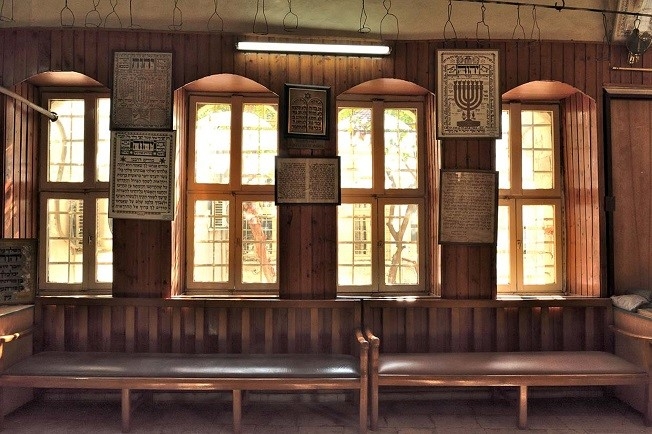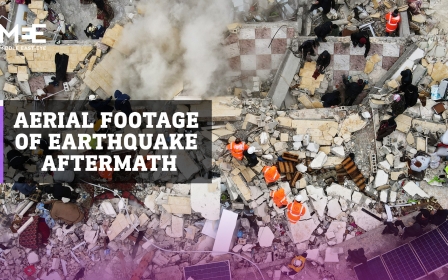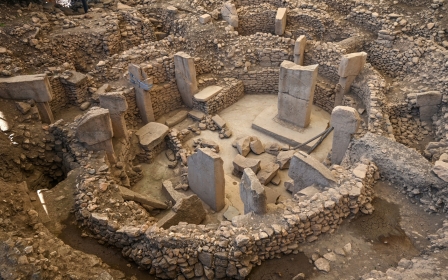Turkey earthquake: 2500-year-old Jewish presence in Antakya may come to an end

The powerful earthquake that destroyed significant parts of the ancient Turkish city of Antakya may also end the 2500-year-long Jewish existence in the city.
The devastating 7.8 magnitude earthquake and aftershocks that struck Turkey and Syria earlier this week have affected over 23 million people. The death toll has passed 21,000, tens of thousands are injured and countless people have been left without shelter.
The Turkish Jewish community announced on Friday morning that Saul Cenudioglu, the head of the Jewish community in Antakya, and his wife Tuna have lost their lives under the rubble.
"Along with our [destroyed] Antakya Synagogue, the 2500-year-long Jewish life has come to an end with great pain," the community said on Twitter. "We are in deep pain from losing the veteran president of our Antakya Jewish community, the city's elder brother, symbol, our elder, the exemplary Saul Cenudioglu and his wife, Tuna Cenudioglu, in the Antakya Earthquake."
The community in Antakya has been very small for the last decade or so, only 14 of them remaining in the city.
New MEE newsletter: Jerusalem Dispatch
Sign up to get the latest insights and analysis on Israel-Palestine, alongside Turkey Unpacked and other MEE newsletters
The earthquake destroyed parts of the 250-year-old synagogue in the city, as the Jewish clergy rushed into the building to save the ancient Torah scrolls that were also registered at museums as artifacts.
Rabbi Mendy Chitrik, chairman of Alliance of Rabbis in Islamic States, told Middle East Eye that the remaining Jewish population of the city had been evacuated to Istanbul.
Ivo Molinas, editor-in-chief of the Jewish-Turkish publication Salom, told MEE that the ancient Torah scrolls have been transported to another city for safekeeping. "The Jewish life in the city has de facto ended," Molinas said.
Antakya, or the biblical city of Antioch, which was established in the fourth century BCE by the Seleucid Empire, is known for its religious and cultural diversity, hosting crucial temples for three major religions.
The city is believed to have been established by Seleucus I Nicator, one of Alexander the Great's generals.
A cave known as the Grutto of St Peter or Church of Saint Peter, where the Apostle Peter is believed to have preached when he visited Antioch, is one of the earliest Christian houses of worship. The Pope designated the site as a place of pilgrimage in 1963, recognising it as the world's first cathedral.
Antakya used to be a thriving city with a significant Jewish presence, according to an interview with Saul Cenudioglu on a local station. "The synagogue was full of people before the 1950s," he said. "Our festivities were celebrated in such a joyous way."
Cenudioglu said that the relationship between Jews and Muslims was such that both communities would visit and congratulate each other during their religious festivals.
"Most of [the Jewish community] left for Israel [by] 1960 because many members were tradesmen and some other locals didn't allow them to trade anymore," he said. "And the bulk of the remaining people left in the 1970s during the right-wing and left-wing clashes, where our community was targeted."
Rabbi Chitrik said that, even though the Antakya Synagogue had some structural damage, it would be repaired and the ancient Torahs would be restored there.
"However, it will be difficult to bring the people back to the city," he said. "A community of mostly elderly people who need to rebuild their homes. This can take time. A lot of time."
This article is available in French on Middle East Eye French edition.
Middle East Eye delivers independent and unrivalled coverage and analysis of the Middle East, North Africa and beyond. To learn more about republishing this content and the associated fees, please fill out this form. More about MEE can be found here.




